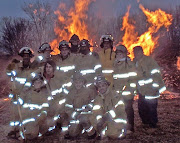Jonathan Kozol. Amazing Grace & Bernard Goldberg. “Jonathan Kozol” from 100 People Who Are Screwing Up America (And Al Franken Is # 37)
Premise:
· Anger
· Violence
· Unfairness
· Ignorance
· Children’s role in society
· Diseases: AIDS, HIV, etc.
· Life in poverty
· Poverty
· Everyday life
· Personal protection
· Religion
· Race
· Heritage
· Education
· Teachers
· Families/ parents
· Awareness
Author’s Argument:
Kozol and Goldberg argue that society is vastly changing for the worse. Individuals who have been placed or are forced to life in poverty stricken areas suffer from being able to walk out onto a street or go school with out any worries of being gunned down. Many children in these locations are exposed to drugs, prostitution, violence, disease, and what do they learn by going to school? Not much is taught to them in school, but the things they are taught while on the street should not be around them.
Evidence:
1. Education - Kozol asks the little boy in Amazing Grace if he knows who George Washington was, and the boy replies by saying I know nothing or any one of/about that name. This proves that the education that each child is getting is not very good. Possibly the teachers may not teach to their expectations because the personally think that the child will be dead before they graduate high school, so there’s no point in fully educating the students. This argument can lead to the assumption that a child of color is placed at a lower value than a white child in the community.
2. On page 6 they are introduced to the teddy bears in the trees, which the boy (Cliffie) ignores. On pages 11 and 12 Kozol is answered by pastor Overall about why and what the bears are there for. “Overall tells Kozol that they are hung in the trees because it is a “Children’s Park,” where volunteers arrive twice a week to give out condoms and clean needles to the addicted men and women, who decide to bring their children along. The children play near the bears while their guardians wait for their clean needles so they can shoot up heroine and cocaine to get a high (Kozol 12).”
3. Goldberg presents evidence on page 294 that the American school system is falling apart and has broken down over the few decades when it comes to educating a child. He goes onto continue by saying that violence is to involved in schools today. As a result many kids feel no need to learn about history, they are too concerned with life and learning how to survive living in poverty, where violence is everywhere. Over all leaving these children unaware of their heritage and the recognition that each of them are from the same place.
Questions/Comments/Points to Share:
I really like the first article/reading by Kozol, because I knew New York had a high poverty rate but I was unaware that they were placed outside of Harlem. My family comes from New York City and mainly from the Bronx and Harlem, but this back in the day when mostly Italians and Irish populated these areas. I also was unaware that the state does provide some care for these people by giving them heaters, sleeping bags, electrical blankets, and etc. but I do know that life is still hard and dangerous. One thing that did shock me was the amount of children that commit suicide or that had died with in the past year in this article; and the amount of individuals who suffer from AIDS, HIV, and addictions to drugs. I liked this article, because it is from a child’s view intertwined with the perspective of an adult. Goldberg’s article was very dull to me. I found it hard to comprehend what I was reading; I felt that there should have been a little more to what he was trying to get at. Because there are more issues in this world than those surrounding the topics of heritage and schooling. Life experience and knowing how to survive are the key things needed I think to live a life of safety from the violence. This was somewhat shown in Kozols’ article when the little boy looks to see if the streets are clear and safe.
I found the first reading much easier to read and comprehend than the second. I really got into the first one too; I had a concrete image in my mind of what Kozol was seeing through the eyes of the little boy. I think it does relate to Johnson, but definitely can be related to S.C.W.A.A.M.P. in the way that each issue makes up society. And here the issues of safety, disease and addiction, and violence make up the society in Mott Haven, New York.
Sunday, February 10, 2008
Subscribe to:
Post Comments (Atom)



No comments:
Post a Comment